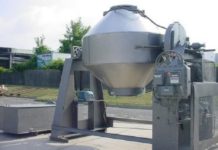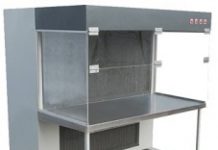Equipment qualification
Equipment qualification performed to “Establish confidence that process equipment and ancillary system are capable of consistently operating within established limit and tolerance”
User requirement specifications.
An authorized document that defines the requirements for use of the system, equipment or utility in its intended production environment.
URS should be prepared for systems, utilities and equipment, where appropriate
URS should be used to verify, at a later stage, that the purchased and supplied system, utility or equipment is in accordance with the manufacturer’s needs as specified.
Design Qualification.
Design Qualification (DQ) defines the functional and operational specifications of the instrument and details the conscious decisions made in the selection of the supplier. DQ should ensure that instruments have all the necessary functions and performance criteria that will enable them to be successfully implemented for the intended application and to meet user requirements.
Perform prior to purchases
URS should be considered when deciding on the specific design of a system, utility or equipment.
A suitable supplier should be selected for the appropriate system, utility or equipment.
The supplier should be approved prior to purchasing the system, utility or equipment On delivery of the system, utility or equipment,
The user should verify that it meets the agreed design specifications and satisfies the URS Once DQ is completed, IQ may commence
Factory Acceptance Test (FAT)
The purpose of FAT is to establish confidence that the equipment or system is tested to the extent possible at the manufacturer’s facility and that it is ready for shipment and installation at the operational site. FAT activities may include: Verification that the equipment or system has been constructed in conformance with the Purchase Order and other Engineering specifications. Safety issues and concerns have been addressed if applicable (e.g. Safety Assessment). Any software associated with the equipment or system has been verified for proper installation and security. The equipment will perform the specified operations as designed and documented Any issues or concerns are addressed by the vendor prior to shipment and acceptance by the customer. All required drawings, documents, cut-sheets, sequence of operations, etc. are properly documented and delivered by the vendor. Reference to documented results in the FAT may be appropriate for subsequent qualification activities if it was planned, executed, and documented
Site Acceptance Test (SAT)
The purpose of SAT is to establish confidence that the equipment or system has been built to design specifications, assembled, and debugged by the manufacturer at the operational site, and that it is ready for turnover to the customer for acceptance. The extent of testing is agreed with the manufacturer in advance and is documented in a test plan or protocol. Once the SAT is approved the customer owns the equipment.
Typically the SAT is a repeat of the FAT along with testing for anything that was discovered, repaired, redesigned, etc. during or after the FAT.SAT activities may include: Visual and or other inspections to ensure no damage occurred during shipment. Reassembly if the equipment had to be shipped in pieces due to size or other issues Verification that the equipment or system has been constructed in conformance with the Purchase Order and other Engineering specifications.
Installation Qualification (IQ)
Establishing confidence that process equipment and ancillary systems are compliant with appropriate codes and approved design intentions, and that manufacturer’s recommendations are suitably considered. In other words: (1) installation of hardware and system software per the manufacturer’s instructions, or (2) in the cloud, the provisioning of a virtual machine per an approved procedure and the installation of system software per the manufacturer’s instructions
Content of installation qualification
- Supplier and manufacturer name
- When and where received
- Condition upon receipt.
- System or equipment name, model and serial number
- Date of installation
- Installation by whom, where and when.
- Spare parts, relevant procedures and certificates.
- Material of construction of product contact part and product non contact part.
- Ancillary equipment used in conjunction with the equipment being qualified should be identified
- Process and control system overview
- System and Options Installation Verification
- System Operational and Safety Checks
- Switches Settings
- Utilities required to operate the equipment should be identified
- Operational and maintenance Requirement Verification
- All deviations and non-conformances from URS, DQ and acceptance criteria specified, observed during installation, should be recorded and investigated.
- The outcome of the IQ should be recorded in the conclusion of the report, before OQ is started. Requirements and procedures for calibration, maintenance and cleaning should be drawn up during installation.
Operational Qualification (OQ)
Establishing confidence that process equipment and sub-systems are capable of consistently operating within established limits and tolerances. In other words: testing against the documented and approved requirements and specifications (unit, string, and integration testing per the documented and approved system design specifications; and system testing per the documented and approved functional requirements).
Equipment Employed for Multiple Products When equipment is employed for multiple products, one may consider using the proven acceptable range (PAR) approach. The establishment of PAR to include operating and control parameters represents much of what process validation is all about. The function of PAR is to include and validate all corresponding control and operating ranges at the same time.
Content of operational qualification
- Critical instrument calibration
- Key functionality checks
- Systems, utilities and equipment should operate correctly and their operation should be verified in accordance with an OQ protocol.
- Critical operating parameters should be identified. Studies on the critical variables should include conditions encompassing normal, upper and lower operating limits and circumstances (this includes “worst-case conditions”).
- OQ should include verification of operation of all system elements, parts, services, controls, gauges and other components.
- The results for the verification of operation should be documented in the OQ report to indicate the satisfactory operation.
- SOPs for the operation should be finalized and approved during this phase of qualification.
- Training of operators for the systems, utilities and equipment should be provided and training records maintained.
- Systems, utilities and equipment, as appropriate, should be released for PQ or routine use after completion of OQ.
- All calibration, cleaning, maintenance, training and related tests and results should be verified to be acceptable.
- Any discrepancy or deviation should be recorded and investigated.
- The outcome of the OQ should be recorded in the conclusion of the report, before PQ is started.
Performance Qualification (PQ)
Establishing confidence that the process is effective and reproducible, or product performance qualification: establishing confidence through appropriate testing that the finished product produced by a specified process meets all release requirements for functionality and safety.
In the PQ phase, we like to challenge the equipment, much like in the OQ phase, but now under load. While it’s great that it runs at 50 RPM or 150 RPM when it’s empty, what happens when there’s 300 kilos of material in it? Can it still achieve those speed ranges? That’s the essence and focus of the PQ phase. Once you’ve completed these three phases, the equipment is available for use in whatever process you intended for it.
Requalification
Systems, utilities and equipment should be maintained in a qualified state through the life of the system, utility or equipment. Routine requalification of systems, utilities and equipment should be considered based on the outcome of risk management principles which include factors such as calibration, verification and maintenance data and information.
The qualification status and requalification due dates should be documented in a defined schedule. The scope and extent of qualification should be determined based on risk assessment when changes to an existing system, utility or equipment are made.








